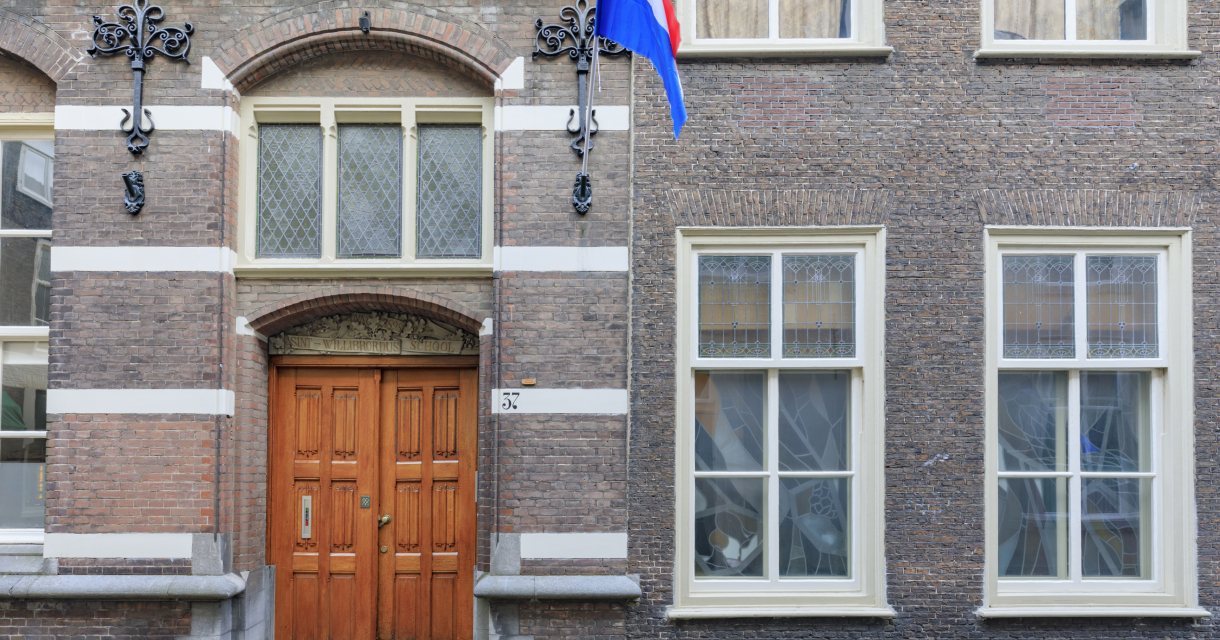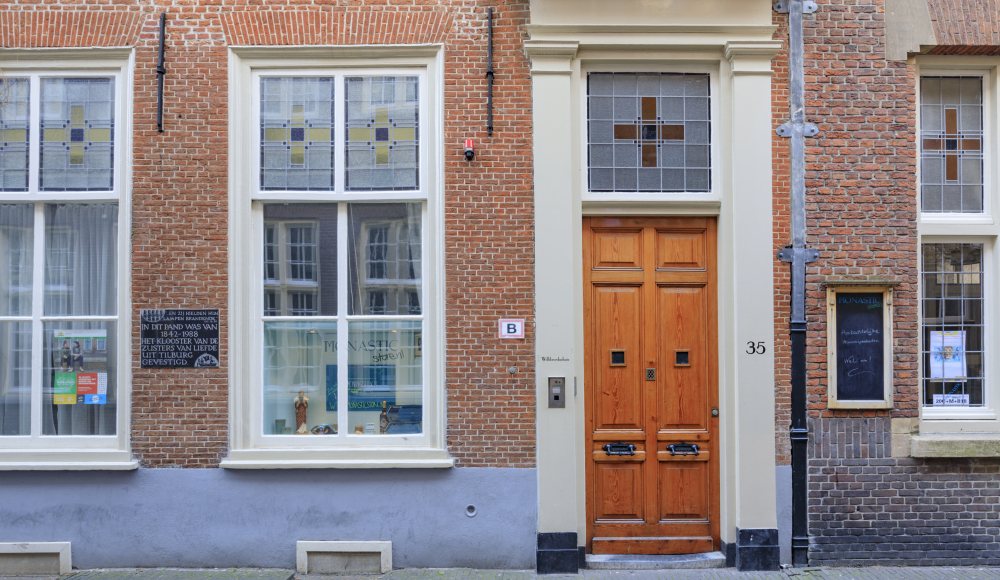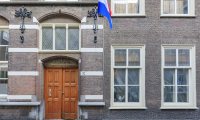Willibrordushuis en Willibrorduskapel

The Hofkwartier with its shops, upstairs apartments, craftsmen and monastery still seems to be the city as it was intended: a colorful mix where spiritual life is also part of the street. One of the oldest streets in The Hague forms an oasis of peace here: the Oude Molstraat. There, at numbers 35 and 37, are the Willibrordus House and the Willibrordus Chapel.
In the 17th century, the Catholics already found a safe haven here. This place is still a spiritual haven, but now with a contemporary twist. For example, the Willibrordushuis houses a craft brewery and a Monastic Store that sells statues and icons, but also wellness products, gingerbread, and of course the home-brewed beer: the Haagsche Broeder. And the Willibrordus chapel is a beautiful municipal monument.
Secret Church during the Reformation
Whoever enters the Oude Molstraat in the Hofkwartier should really look up. Otherwise, the facade of the Willibrordus chapel with the Willibrordus statue and the stained glass window will not stand out. That facade has not always been this way. Long ago, the buildings behind the two house numbers together formed the patrician house Huis te Baertwijck.
Around 1580, during the Reformation, Holy Mass was banned for Catholics, because Protestantism became the official religion. A disaster for the members of the parish of St. Jacob in The Hague, who until then massively visited the Grote or St. Jacobskerk on the Riviervismarkt. Their church became Protestant. But they did not let themselves be crushed: hidden churches popped up behind numerous facades in The Hague. The parishioners of St. Jacob received part of Huis te Baertwijck as a hidden church. Remains of this are still visible in the dining room of the current Willibrordushuis.
Loving sisters
The hidden church remained in use for a long time. It was not until 1806 that the Netherlands gained religious freedom thanks to Louis Napoleon. The small church was bursting at the seams, until the solution presented itself in 1878: the St. Jacobus church on Parkstraat, built under the architecture of Pierre Cuypers, was opened.
In 1842, the left part of Huis te Baertwijck had already been transformed into a convent for the Sisters of Charity from Tilburg, who devoted themselves with great dedication to education and the care of the sick in the city. A school building was erected again to the left of that house. The Sisters of Charity remained the users and residents of these buildings until 1988.
Beautiful Willibrordus Chapel
Catholic strongholds developed in the center in two places: here in the Oude Molstraat and in the Assendelftstraat near the Prinsengracht. After a few renovations, the right part of Huis te Baertwijck underwent a major metamorphosis in 1928: a beautiful convent chapel was built on the first floor for the Sisters of Charity, designed by Jos Duynstee. He was also the architect of many shops and churches in The Hague and of the extension of the Passage. The Hague artist Lou Asperslagh was hired for the murals of the Willibrordus Chapel. The Willibrordus Chapel is open every day, be sure to take a look and breathe in the peaceful atmosphere. You can pray, but you don't have to.
Brothers of Saint John
In 1988, the buildings were taken over by the Willibrordus community, after which the Willibrordushuis and the Willibrorduskapel are named. Subsequently, they came under the management of the Family of Sint Jan, a Catholic community. A number of brothers now live in the Willibrordushuis. They organize activities, such as retreats and lectures on philosophy and art. And they brew beer.
Four beer
Reflection and meeting are the tasks that the Brothers of Saint John set themselves for society. This also includes life in the brewery: beer. In 2010, a hobby brewer and a few brothers started brewing beer in the monastery kitchen. This was so popular that they started looking at whether they could do this on a grander scale. Rules were examined, permits applied for and buyers found, and in 2014 the first foaming Haagsche Broeder Prior was sold.
There are now four types. The dark Prior has been joined by the blonde Haagse Broeder Novice, and soon there will also be the fresh and light Haagsche Broeder Postulant. Especially for December 27, the day of Saint John, the brothers brew the Haagsche Broeder Johannes. The Haagsche Broeders are for sale in the Monastic Store. Cheers!


